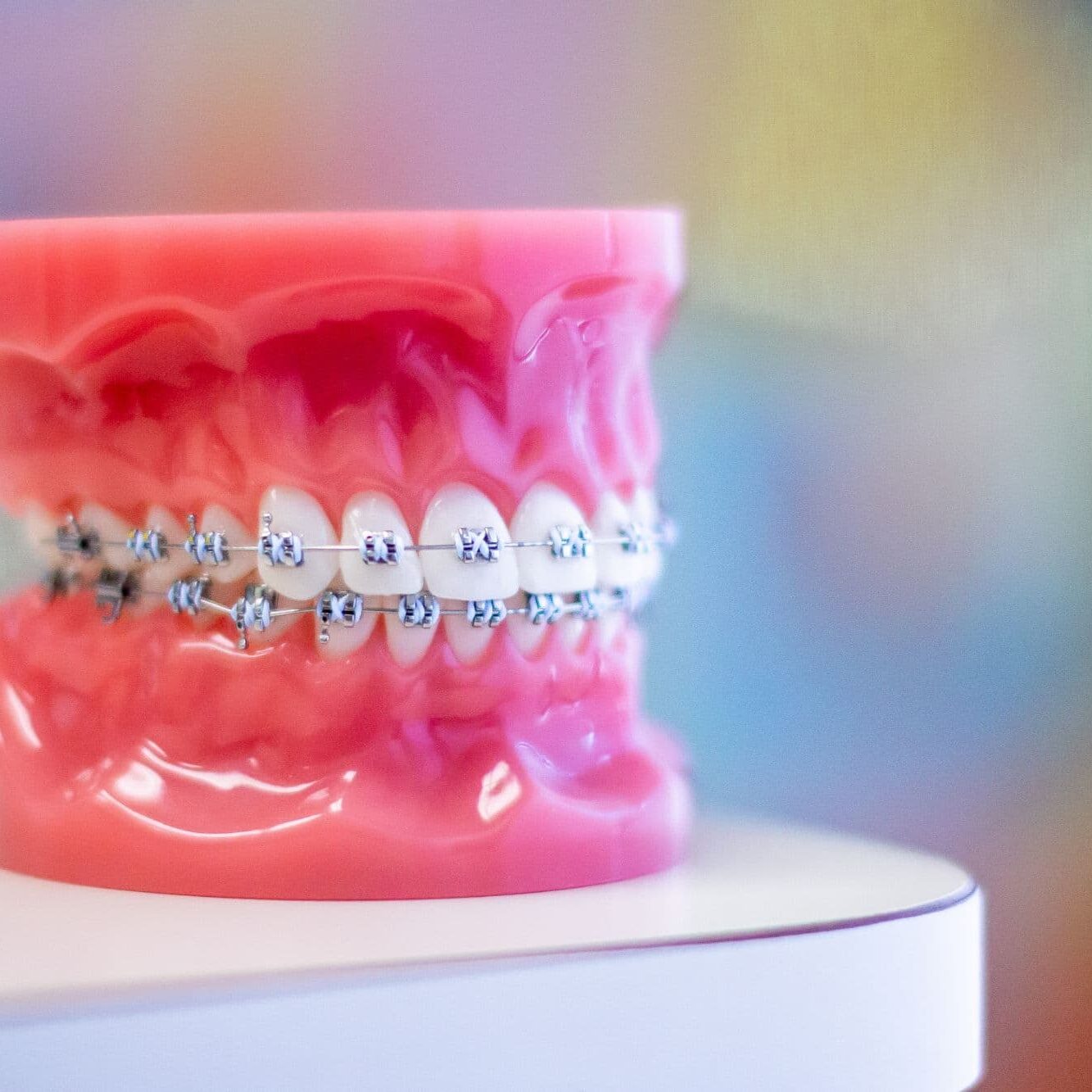
Traditinal Metal Braces
Austin & Bee Cave Braces
Traditional braces have been around for a long time, and they’re probably the most recognizable symbol of orthodontics in Austin, Bee Cave and the surrounding area.
All About Luv Braces Braces
What Are Braces Made Of?
These orthodontic workhorses have a long history of successful treatment and are great at correcting many oral issues. One of the first ways to straighten teeth, traditional braces are still the most widely used appliance when it comes to correcting tooth alignment.
At Luv Braces, metal braces continue to be the top orthodontic treatment for patients of all ages. These braces are not the same as they once were. Technology has allowed them to become smaller, more comfortable, and more attractive. These braces are strong and effective, making them excellent for more difficult cases for our Austin and Bee Cave patients.
They can work faster at closing gaps and aligning teeth than other treatments might. This can potentially shorten your treatment time. Metal braces are cost-effective because they don’t require some of the more complex technology or expensive equipment that newer treatments do.
Modern braces are smaller, more comfortable and more attractive. Metal braces are built from high-grade stainless steel and are the most common type of braces you’ll see.
Brackets are bonded to the front of each tooth and connect to one another by an archwire, helping to guide your teeth where Dr. Tahbaz and Dr. Rezapour want them to move.

Brackets
The brackets Dr. Tahbaz and Dr. Rezapour uses are durable and made from a mix of stainless steel, nickel, and other metals.
Brackets have little hooks or doors where Dr. Tahbaz and Dr. Rezapour will thread a wire. The bracket can then be secured by closing the door or putting an elastic over the wire.
Glue
This is what Dr. Tahbaz and Dr. Rezapour will use to attach the brackets to your teeth. It’s common to attach the bracket directly to the tooth with glue.
Wire
This thin piece of metal runs from one bracket to another. Dr. Rezapour or Dr. Tahbaz will change the wire's shape and curvature to move your teeth in the right direction.
The wire will attach all of your bottom or upper teeth together in many cases. We might occasionally cut the wire if connecting just a few teeth is better for your treatment plan.
Spacers
These small elastic “donuts” or rings can be used by Dr. Tahbaz and Dr. Rezapour to create space between your teeth when needed, typically before bands are placed. They’re also referred to as separators.
Elastics
If Dr. Tahbaz and Dr. Rezapour determine that you need bite correction, elastics are essential. They’re generally strung between an upper bracket hook and a lower bracket hook.
This will pull the upper jaw backward to correct an overbite or the lower jaw back to correct an underbite.
We may use rubber bands for many different situations, especially when we want to put extra pressure on the teeth or jaws.
Orthodontic Bands
These are stainless steel rings that are cemented to your teeth using dental bonding agents. These bands can provide an anchor for your braces and orthodontic appliances, but they’re not used for everyone. Dr. Tahbaz and Dr. Rezapour will determine if your treatment will benefit from orthodontic bands at your initial consultation.
Elastic Ties/O-Rings/Ligatures/Colors
These tiny rubber rings or bands are used to attach the archwire to the brackets. They’re less rigid than spacers, and at Luv Braces, they come in dozens of colors.
